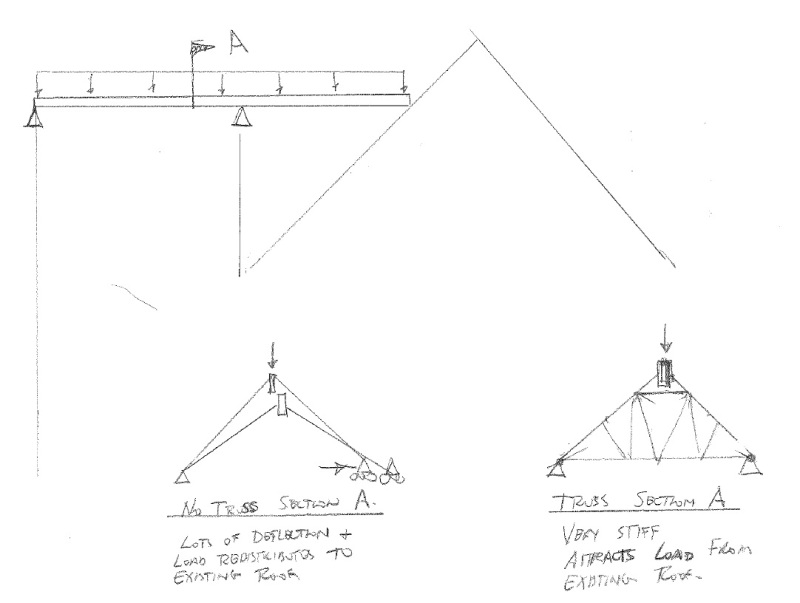I am making a reconstruction of very old existing house. Existing roof has to remain pretty much intact.
There is a new extension of an existing building and roof above it - (ridge beam) represents additional load on existing roof beam.
Because of this additional load on existing roof system, Im having additional bending moments in existing column as shown in attached picture. The column cannot be replaced with a new/sufficient one since its a part of an existing roof system (I dont know how to call this system - 2 red timber frames - dont know whats the expression in english langugage). I was thinking about removing braces (horizontal bracing) and reinforce existing column with steel plate (both sides) and connect it with bolts and then add new timber braces. I will design bolts based on vertical shear flow between column and steel plates.
What do you guys think about this situation? better options?
EXISTING + NEW ROOF - plan view:
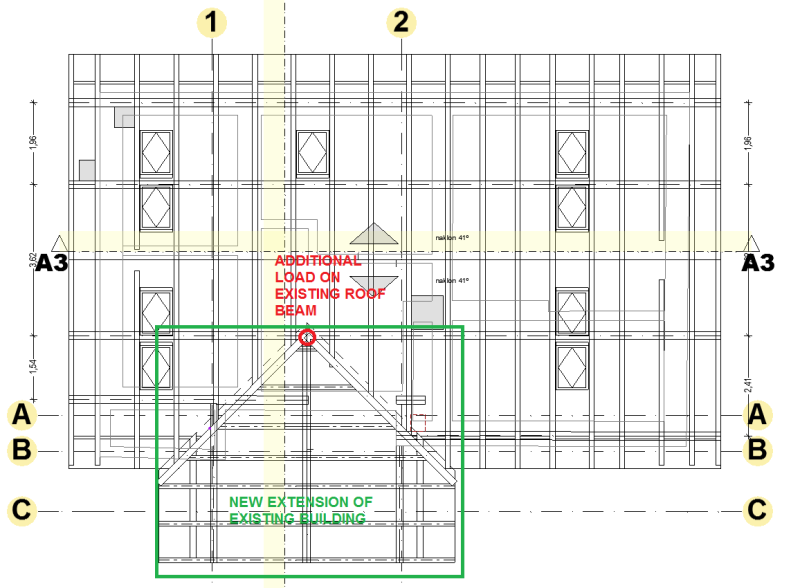
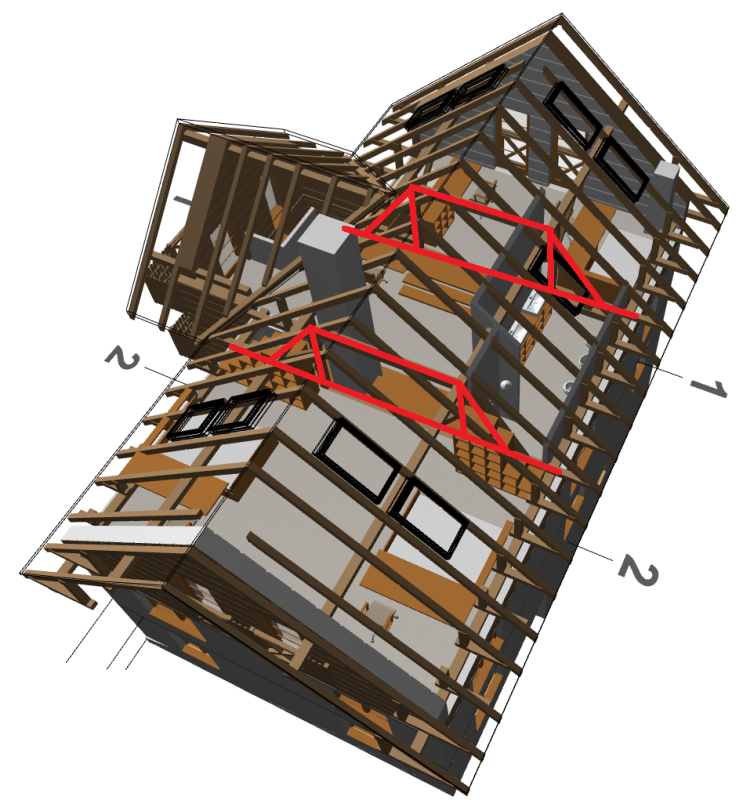
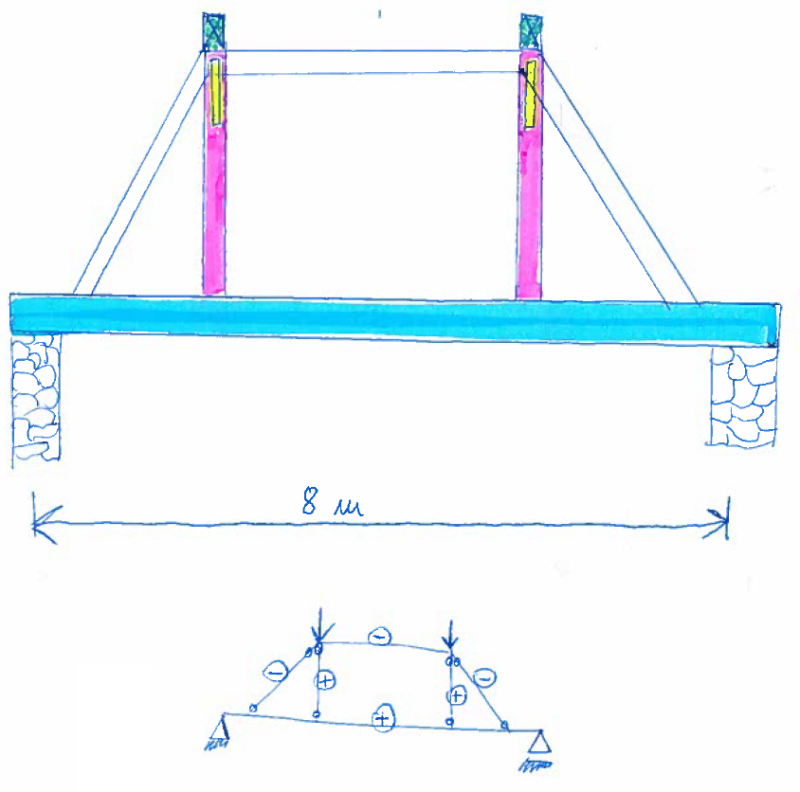
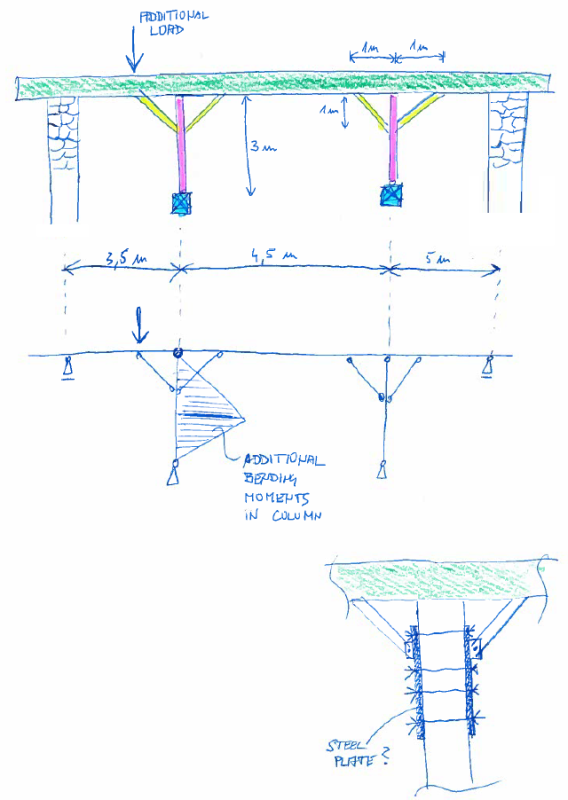
Additional load in the picture below is the result from a ridge beam of a new extension of a building.
existing column with braces:
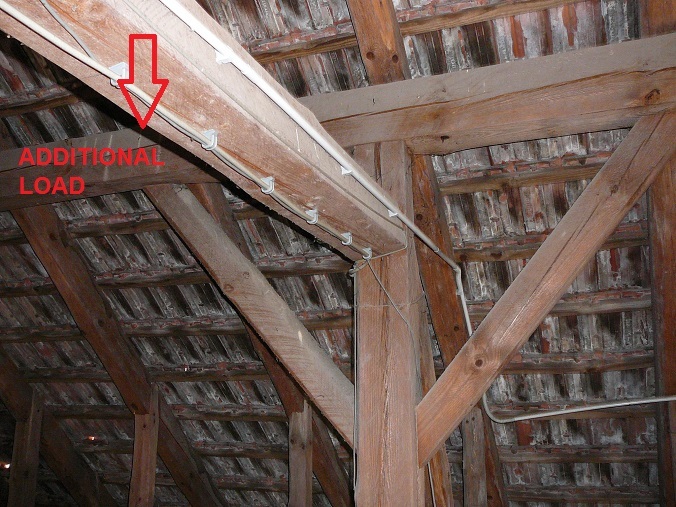
There is a new extension of an existing building and roof above it - (ridge beam) represents additional load on existing roof beam.
Because of this additional load on existing roof system, Im having additional bending moments in existing column as shown in attached picture. The column cannot be replaced with a new/sufficient one since its a part of an existing roof system (I dont know how to call this system - 2 red timber frames - dont know whats the expression in english langugage). I was thinking about removing braces (horizontal bracing) and reinforce existing column with steel plate (both sides) and connect it with bolts and then add new timber braces. I will design bolts based on vertical shear flow between column and steel plates.
What do you guys think about this situation? better options?
EXISTING + NEW ROOF - plan view:




Additional load in the picture below is the result from a ridge beam of a new extension of a building.
existing column with braces:



